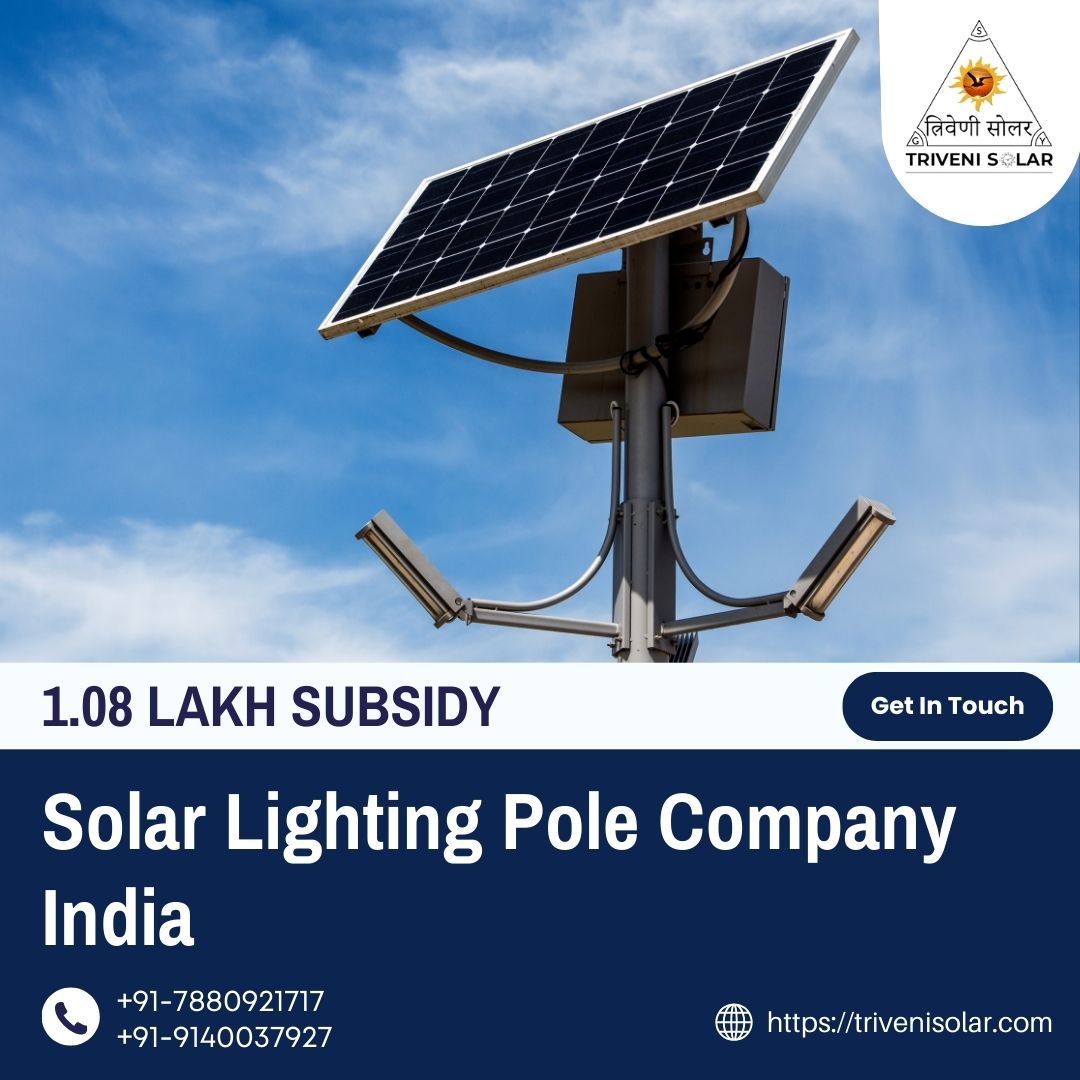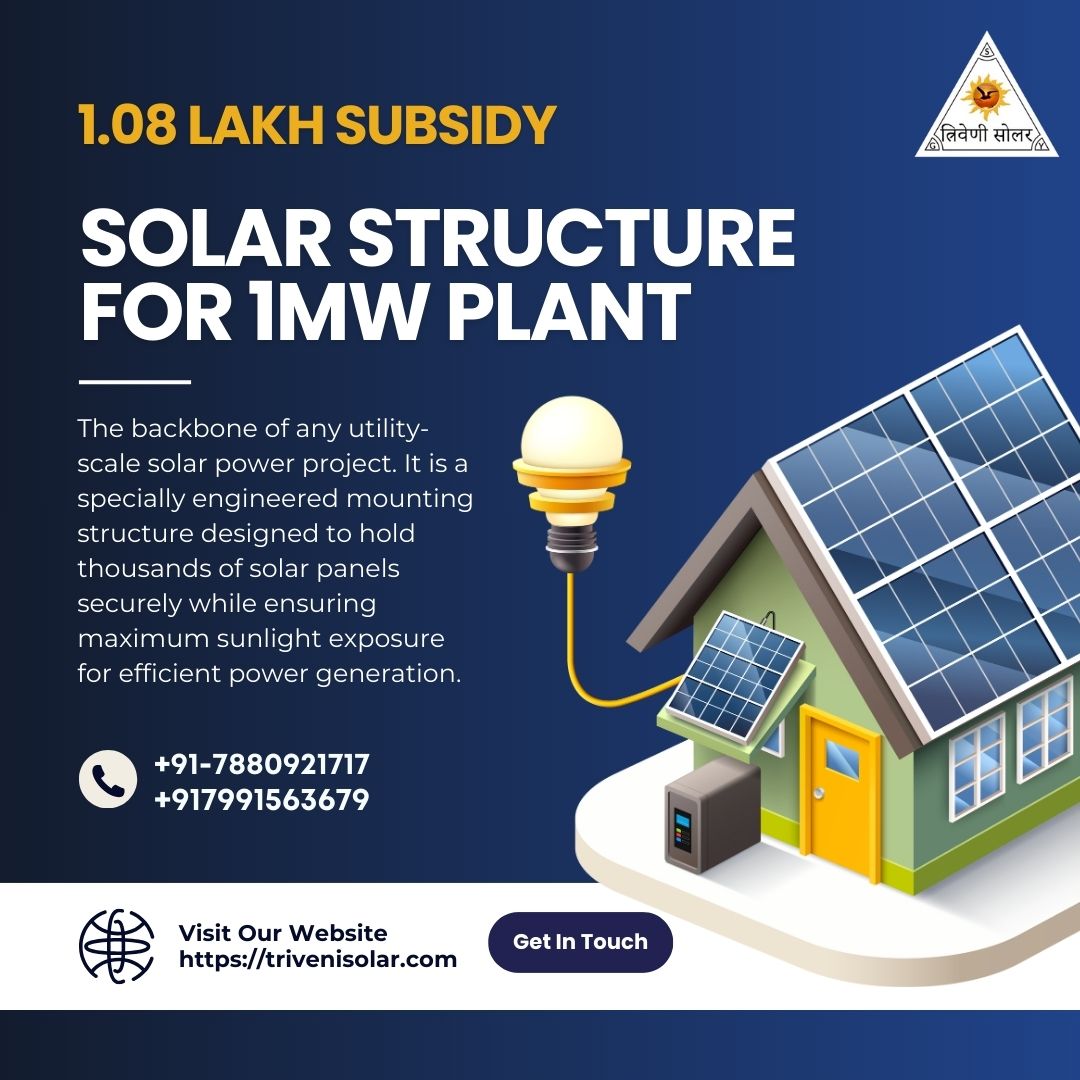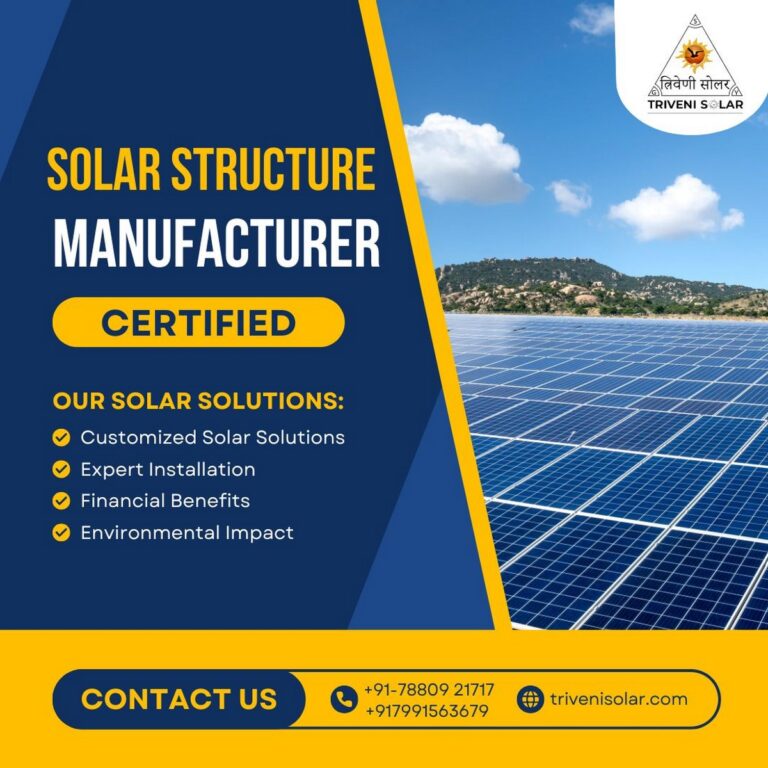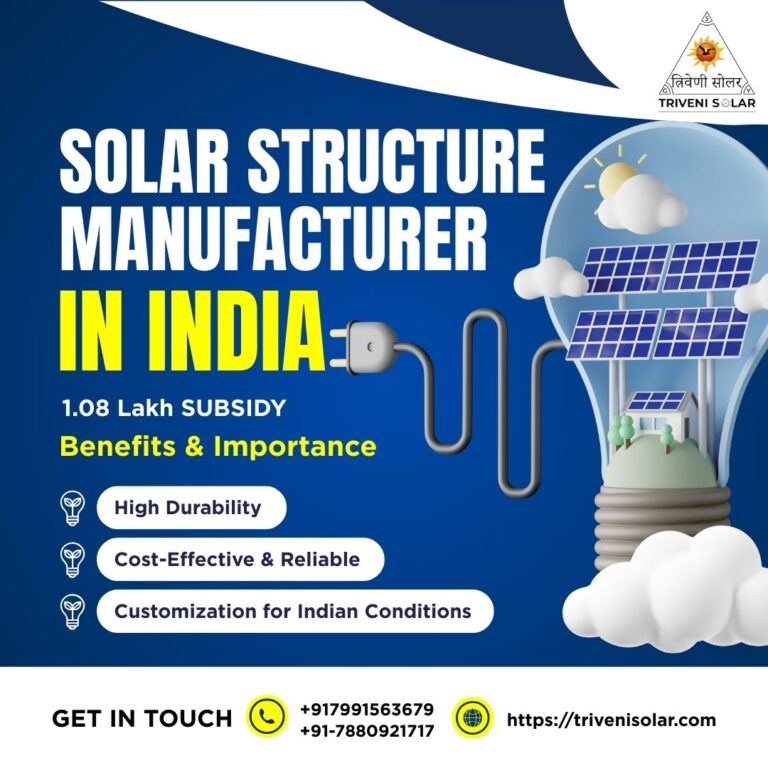A solar structure for 1MW plant is the engineered mounting framework that supports solar panels, ensuring durability, performance, and maximum energy yield. Structures range from fixed-tilt to single- or dual-axis trackers, costing 8–15% of the total project cost.
Ultimate Guide to Solar Structure for 1MW Plant
When setting up a 1 MW solar power plant, one of the most overlooked yet critical elements is the solar structure. These mounting systems account for 8–15% of total project costs, but their design directly influences the plant’s performance, durability, and return on investment (ROI). In this guide, we’ll explore every detail you need to know about solar structures—from types and costs to engineering standards, installation, and future innovations.
Understanding the Basics of Solar Structure for 1MW Plant
A solar mounting structure is the framework that holds solar panels in place, ensuring they’re positioned at the optimal angle to capture maximum sunlight. It absorbs wind loads, supports panel weight, and resists environmental stresses like rain, dust, or snow. While rooftop structures are designed for limited load, ground-mounted structures for 1 MW plants are engineered for large-scale durability and efficiency.
Types of Solar Structures for 1 MW Plant
Fixed Tilt Structures
These are simple, sturdy, and cost-effective structures where panels remain fixed at a specific tilt angle. They are popular in India due to low maintenance requirements but provide limited yield during seasonal sun variations.
Single-Axis Tracker Structures
These structures rotate panels along one axis (east to west), boosting output by 15–25% compared to fixed tilt. However, they require more land (~10% extra), cost more, and demand periodic maintenance.
Dual-Axis Tracker Structures
By moving panels along two axes, dual-axis trackers maximize solar capture, increasing output by 30–35%. Their high cost and complexity make them less common for 1 MW scale projects but attractive for regions with variable sunlight.
Innovative Designs (Bifacial & Vertical Arrays)
Modern trends include bifacial modules mounted on specialized structures to capture sunlight from both sides and vertical arrays that reduce land use while enhancing energy yield in bifacial systems.
Material Choices & Engineering Considerations
The choice of material impacts cost, lifespan, and reliability. The two most common options are
| Material | Pros | Cons |
|---|---|---|
| Galvanized Steel | High strength, affordable, resistant to corrosion | Heavier, harder to transport |
| Aluminum | Lightweight, easy installation, corrosion-resistant | Costlier, lower structural strength |
Engineering design must comply with standards such as IS 875 (wind loads), IEC, and ASTM for structural integrity.


Solar Structure for 1MW Plant Design Standards & Site Requirements
- Land Requirement: Typically 4–6 acres per MW (fixed tilt); 6–7 acres for trackers.
- Soil Testing: Determines whether a pile, ballasted, or concrete foundation is suitable.
- Wind Load: Critical in states like Gujarat and Rajasthan, requiring reinforced structures.
- Climate Adaptation: Anti-corrosion coatings for coastal regions and dust mitigation for deserts.
Cost Breakdown of Solar Structures for 1MW Plant
On average, mounting structures for a 1 MW plant cost ₹30–40 lakhs, accounting for 8–15% of the total project budget. Below is a comparative breakdown:
| Structure Type | Cost Share (%) | Approx. Cost (₹ Lakhs) |
|---|---|---|
| Fixed Tilt | 8–10% | 25–30 |
| Single-Axis Tracker | 10–12% | 30–35 |
| Dual-Axis Tracker | 12–15% | 35–40 |
Fixed Tilt vs. Tracker Systems—Which Is Better?
Choosing between fixed tilt and tracker depends on budget, location, and energy yield expectations. While trackers deliver more power, they also raise CAPEX and O&M costs. Here’s a quick comparison:
| Aspect | Fixed Tilt | Single-Axis Tracker |
|---|---|---|
| Energy Yield | Base | +15–25% |
| Land Use | ~5 acres | ~6 acres |
| CAPEX | Lower | Higher |
| Maintenance | Minimal | Moderate |
| ROI | 5–6 years | 6–8 years |
Solar Structure for 1MW Plant Installation & Foundation Methods Explained
Pile Foundation
Common in large open land projects, piles are driven deep into soil to anchor structures securely.
Ballasted Systems
Suitable for weak soil or rooftops; use heavy blocks instead of deep digging.
Concrete Pedestal
Durable and stable, often used in high-wind or uneven terrain zones.
Typical installation timeline for a 1 MW structure: 6–8 weeks from site preparation to commissioning.
ROI & Energy Yield Analysis
A 1 MW solar plant with fixed tilt produces ~1.5–1.6 million kWh annually in India. Single-axis trackers can raise this by 15–25%, significantly boosting revenue but extending the payback period by 1–2 years. For investors, the choice often balances CAPEX against long-term gains.
Real-World Case Studies & Examples
- Rajasthan Fixed Tilt 1 MW: Delivered stable generation with low maintenance and ROI in 5 years.
- Karnataka Single-Axis Tracker 1 MW: Boosted yield by 20%, but required more frequent O&M checks.
Emerging Innovations in Solar Structures
The industry is rapidly evolving with:
- Modular structures for faster installation and scalability
- Bifacial panel-optimized designs improving ground reflection capture
- AI-powered trackers adjusting panels with weather predictions
- Composite materials reducing weight and corrosion
FAQs about Solar Structure for 1MW Plant
Q1: What is the lifespan of a solar structure?
Most structures last 25–30 years with proper galvanization and maintenance.
Q2: Which material is better—steel or aluminum?
Steel offers strength and lower cost, while aluminum is lightweight and easier to install but costlier.
Q3: How much land is required for a 1 MW structure?
Fixed tilt: ~5 acres; single-axis tracker: ~6 acres; dual-axis tracker: ~7 acres.
Q4: Does a tracker always give better ROI?
Not always—trackers boost output but extend payback due to higher CAPEX and O&M.
Q5: What standards govern solar structures in India?
IS 875 (wind loads), IEC, and ASTM structural codes are commonly applied.
Conclusion – Choosing the Right Solar Structure
The solar structure for a 1 MW plant plays a decisive role in cost, performance, and long-term reliability. Whether you choose fixed tilt for simplicity or trackers for higher yield, design and engineering must be site-specific. For project developers, selecting a trusted partner ensures durability and better ROI.
Looking for reliable solar structures for your next project? Contact us today for expert-engineered, cost-effective solutions.




